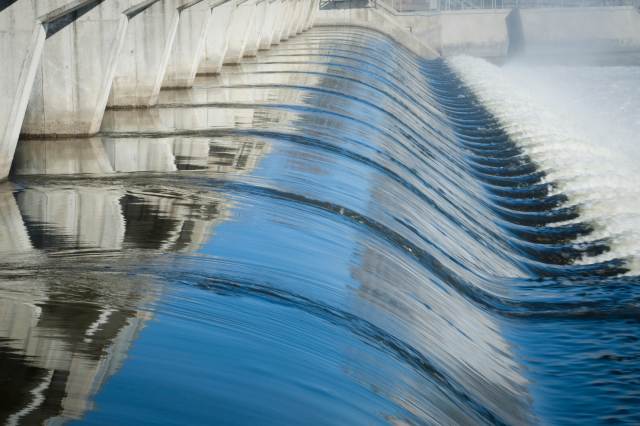6 innovations that can save the planet
Time is running out to tackle dangerous climate change. Fortunately, innovative solutions are appearing across the globe and here in Australia. Here are six innovations that make us optimistic about the future.
1. Capturing carbon
One highly effective way to help fight global warming is to capture carbon already in the atmosphere. And one of the best ways to do that is by planting trees. Global research has identified about 0.9 billion hectares of land that is available for reforestation, with Australia ranked fourth for tree restoration potential. And reforestation also has the positive side effect of protecting biodiversity by creating habitats for animals, birds, insects, plants and fungi.
Seaweed farming is also emerging as a solution for helping remove carbon from the atmosphere. Kelp and macroalgae help capture carbon while also fighting ocean acidification and deoxygenation – two impacts of climate change which contribute to coral bleaching and threaten ocean life. Kelp is also incredibly fast-growing, adding as much as 60 centimetres per day.
Regenerative agriculture is often cited as a potential solution to climate change, and it is certainly possible to reduce emissions by converting current farming systems to more sustainable models. However, even with careful soil sequestration practices, grazing livestock contributes more emissions than it removes. We believe that cuts in the consumption of all livestock products are more likely to help meet the Paris target of reducing emissions to 2 degrees.
2. Reimagining fuel
Hydrogen fuel cells produce electricity and are currently used to fuel cars, buses and even spaceships. Unlike batteries, they don’t need to be recharged – and the only exhaust emission is water. However, there are fossil fuel emissions associated with the production of ‘blue’ hydrogen, which is created with gas. There is huge potential for ‘green’ hydrogen which is created with renewable energy.
With the right policies in place to attract investment, Australia could be a world leader in the development of renewable technologies, including solar and green hydrogen fuel. In fact, the CSIRO has said that with initial government support, an Australian hydrogen fuel industry could quickly become financially sustainable.
Countries like Japan are already developing hydrogen storage technologies and Toyota is sharing its patents for fuel cells with other companies. The Japanese government also plans to use hydrogen to power public transport for the 2020 Tokyo Olympics.
3. Sharing solar energy
Across India, some of the country’s poorest people are enjoying safe, affordable energy with no emissions thanks to solar microgrids. These small-scale solar units generate, store and distribute power that can be shared among local communities. Meanwhile, social enterprises like Pollinate Energy in India are providing solar lanterns, improved cookstoves and solar fans. This helps create cleaner and healthier communities that have a much lower carbon footprint.
In Australia, solar microgrids are growing in popularity, causing the Australian Energy Market Commission (AEMC) to draft a report for the regulation of microgrids in circulation. The Victorian government has already invested in a series of microgrid demonstration programs and recent residential and business developments in Western Australia are using solar microgrids for electricity.
4. Harnessing wave power
Australia has some of the world’s greatest surf beaches – and their waves are a source of renewable, clean energy. With around 80% of us living on Australia’s 25,760 kilometres of coastline, our population is well suited to harnessing wave power. It produces no emissions, it’s predictable, and it doesn’t take up land space.
However, there are drawbacks to wave energy – the machines used to harness wave power can disturb the seafloor and the surrounding marine life. Although the costs are currently high, it’s worth keeping an eye on this promising technology and its future in Australia.
5. Ending the growth mindset
The climate and biodiversity crises show that pursuing infinite economic growth on a finite planet is a recipe for disaster. In response, some are calling for a new economic system that goes beyond measuring progress by gross domestic product.
Under the new model, progress is measured with metrics like health, sustainability or fairness, rather than traditional markers of growth. One example of this new approach to economic modelling is the Green New Deal, which has been promoted by the progressive wing of the US Democratic Party with the aim of cutting emissions while creating jobs. Meanwhile, the New Zealand Labour Party’s ‘Wellbeing Budget’ is designed to tackle long-term challenges, such as the mental health crisis, child poverty and domestic violence.
6. Divesting from fossil fuels
Across the globe, institutional investors are directing their funds away from fossil fuels. Divestment from the fossil fuel industry has accelerated since the 2015 Paris Agreement, which saw world leaders commit to cutting carbon emissions. In September 2019, it was estimated that institutional investors holding more than $11 trillion of assets have promised to divest from fossil fuels. We do not invest in companies whose main business is fossil fuels, and for decades we have actively invested in clean, renewable energy and other initiatives that support the planet, people and animals.
-------------------------------------------------------------
We invest in companies to have a positive impact on the planet, people and animals. Start investing ethically with your Super and Managed Funds.



